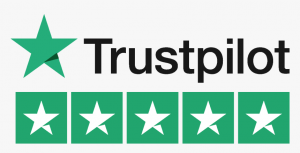The gold market is being turned on its head in 2022. In 2020 gold experienced net sales from central banks, but this trend has been completely reversed this year. According to the World Gold Council, the amount of gold purchased by central banks hit a level that had not been seen since 1967. 673 metric tons were bought in one single month and 400 metric tons during the third quarter alone, which is highly unusual given recent trends. It appears that gold is becoming an increasingly attractive asset for central banks at a time of great economic instability, sparking a renewed interest in gold trading as speculators swoop in to capitalize on its newfound popularity.
Why are Global Central Banks Adding Gold to Their Reserves?
The European Central Bank, the US Federal Reserve, the Bank of England, the Swiss National Bank, and the Australian central bank all “now face possible losses of more than $1 trillion altogether, as once-profitable bonds morph into liabilities,” according to Reuters.

When a central bank experiences a loss, it can fill the gap with available gold reserves from prior years, request assistance from other central banks or, as a last resort, turn to governments for help. Unfortunately, this usually involves using taxpayers’ money – a burden that can come at colossal costs. Central banks are similar to commercial banks in the sense they both may face extreme difficulties; however, the backing of individuals’ contributions provides an extra cushion against financial fails. Ultimately, prudent fiscal management will help central banks avoid finding themselves turning to national governments in times of need.
Gold has proven its centuries-old status as a reliable safe haven in times of monetary destruction. As global debt is at an all-time high and central banks are facing immense losses, gold stands out as the one true asset that is able to protect against such devastation. Additionally, gold retains its value with the issuance of digital currencies, which further reinforces gold’s standing as an unbeatable reserve of wealth. Governments have yet to put forth meaningful reform to lower deficit spending which only increases demand for gold, furthering gold’s secure position in today’s economy.
Purchasing gold is an increasingly attractive option for central banks, particularly when losses appear on their balance sheets. Gold can increase a bank’s reserve level, lessen any losses they incur, and help them foresee how newly created digital currencies may even affect inflation. When considering long-term investments in gold, it is clear that buying European or North American sovereign bonds simply does not mitigate the risk of losing money if inflation remains high. Furthermore, gold is both liquid – meaning it can quickly be bought or sold – and relatively safe compared to other investment alternatives. Consequently, it is very likely that gold purchases are the only viable option for these central banks.

 with 700+ reviews
with 700+ reviews



